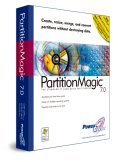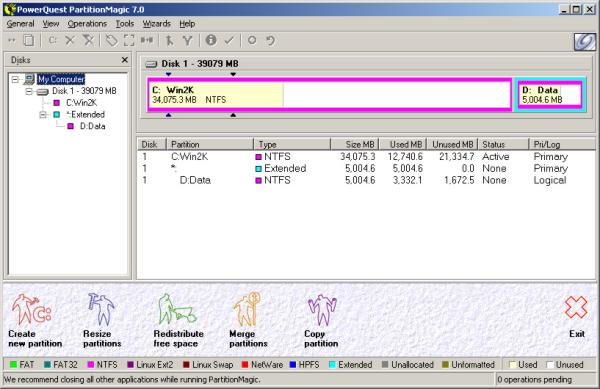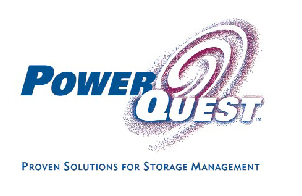Have you have ever been faced with the
requirement to re-arrange your partitions on a nice stable computer that
has been running for quite a while – and therefore has lots of programs
installed and lots of data? If so, you know what a daunting task this can
be if you only have the tools Microsoft provides to accomplish
the task. You will find all sorts of excuses why it doesn’t need to be
done. All this so you can avoid starting over from scratch, blowing away
your partitions (and of course the data), creating the new partitions,
reformatting, reinstalling the operating system, and restoring from backups.
When it comes to re-arranging partitions
simply for convenience, such as deciding to create a partition to keep
data separated from the operating system, even the thought of the amount
of work involved is too horrendous to even contemplate.

It doesn’t have to be like that. For years,
PowerQuest has produced the program PartitionMagic whose sole purpose is
to allow you to re-arrange your partitions on-the-fly, without endangering
the operating system or the data. It permits you to turn a weekend (or
longer) project into an operation that takes mere minutes.
I reviewed PartitionMagic 6 in January
2001. You can read that review at opcug.ca/reviews/partmag6.htm
and I will try not to be too repetitive here. Let me just highlight some
of the tasks PartitionMagic accomplishes smoothly and effortlessly and
then I will detail the new features in version 7.
PartitionMagic deals with every common
file system used on PCs these days – FAT16, FAT16x, FAT32, FAT32x, Linux
Ext2, Linux swap, and NTFS. It can create any of these partition types
and convert back and forth between FAT, FAT32 and NTFS formats. You can
split FAT and FAT32 partitions, and you can merge FAT, FAT32, and NTFS
partitions.
An included utility – DriveMapper – allows
you to move applications to a different drive letter and adjust references
in the registry, shortcuts, and .ini files so the programs continue to
function.
Also included is BootMagic, which allows
you to install many different operating systems on your computer and choose
between them on boot up, using a nice graphical, mouse-able menu. BootMagic
supports everything from DOS through Windows XP, Linux, BeOS, and more.
The list of new features in PartitionMagic
is not long. The main ones are:
-
Support has been dropped for the OS/2 partition
types HPFS and HPFS/386.
-
You now have the ability to merge NTFS partitions
– version 6 could only merge FAT and FAT32 partitions.
-
Support for disk size has grown to 80GB.
-
You can now split partitions below the root
folder.
-
PartitionMagic now supports external USB hard
disks. This support is only available through the Windows interface, not
if using the “rescue disks”.
-
Videos on the CD-ROM showing how to perform
different operations. This is a really nifty idea and PowerQuest has also
made them available on their web site at ttp://www.powerquest.com/support.
Select “PartitionMagic” from the Demonstration
Videos drop-down list, then click a movie title to play.

PartitionMagic's Windows interface provides a safe and easy way to
manipulate partitions on the fly without destroying data
System requirements vary by OS. They start
with a 486 with 32MB RAM on Windows 95 and go up to a Pentium 233 with
64MB RAM for Windows XP. Suffice it to say – if your computer is running
anywhere close to decently, PartitionMagic can run on it!
You can download a demo version of PartitionMagic from the PowerQuest web site
that lets you try out the user interface, but not make any changes to your
disks.
If you already have a previous release
of PartitionMagic, check the new features list to see if it is worth upgrading.
If you don’t have a copy of PartitionMagic, rest assured that this program
can make adjusting your partitions a painless process. Street prices around
town seem to be about $95. You can purchase it through their user group
program at www.ugr.com/order/ for US$35 plus US$10 shipping. Use the order code UGEVAL01.
 Bottom Line:
Bottom Line:
Partition Magic 7
$95 CAN (street price)
PowerQuest
http://www.powerquest.com/support
Originally published: January, 2002